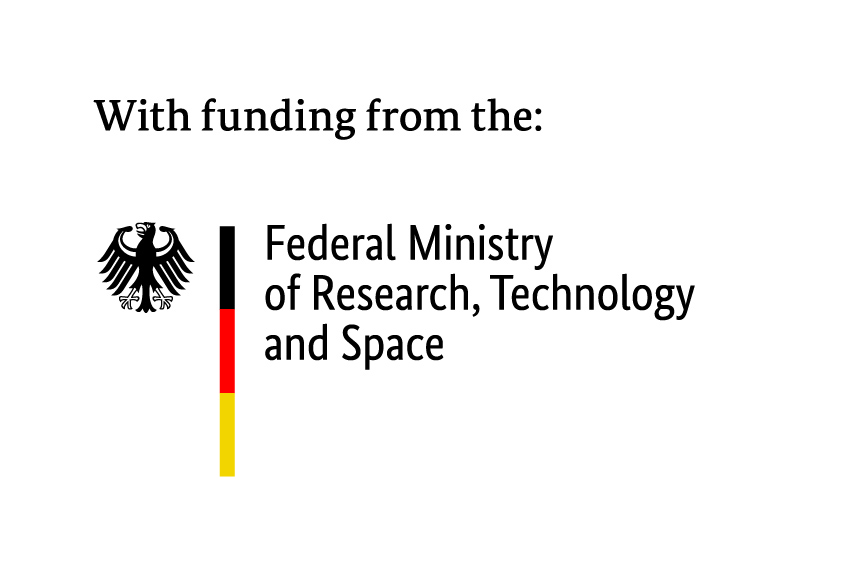Digital systems are based on acts of transformation from continuity and unity into discreteness and separation. These acts of transformation have been popularized in the multiple ways in which humans engage with AI systems and other forms of digital technologies. Everything we do is transformed, one could say, automatically into data. It is transformed into discrete units that can be computed. Digital technologies have become more than tools for research; people produce knowledge with them, engage emotionally through and with these systems, generating new forms and spaces of intimacy. At the same time, these technologies carry a history of creating disconnections, failing to account for different ways of engaging with the world. They are the result of a certain imaginary of the human and intelligence, one that leaves aside many other existing ways to be in the world. What kind of communities are enabled by technologies? What kind of technologies are successful in bringing communities together? Can we imagine a history of technology that is based on plural ways of understanding intelligence and the human? How can we design technologies that bring people together? How can we imagine technologies that enable communities?
The Ambiguity of Sorting is a pop-up exhibition and a panel discussion that takes place during the 8th edition of the Conference of the Society for the History and Philosophy of Computing. The event brings together installation, performance, and conversations to discuss how the history of intelligent systems embodied ideas of intelligence, the human, and how we live together. With the panel, we invite to think of a different history of computing, one where those that were not thought to be fitting within their categories were creating their own technologies all along.
With contributions by: Sasha Bergstrom-Katz, Ren Loren Britton, and Verena Friedrich
Organization and moderation: Ana Maria Guzmán Olmos
Thursday, December 18, 2025, 6 to 8 pm
Super C – 6th floor – Generali-Saal, Templergraben 57, Aachen, Germany
The event takes place on the 6th floor of the SuperC building. The 6th floor can be reached via an elevator where a wheelchair fits in. A barrier-free restroom is available. If you have any questions about the space, please write us to: events@khk.rwth-aachen.de.
The event will take place in English spoken language.
Abstracts
Unboxing Intelligence
Bergstrom-Katz’s project, Unboxing Intelligence, positions the intelligence test kit not merely as a scientific tool, but as a powerful actor in its own right and casts it at the center of a critical investigation into the construction and dissemination of intelligence. Composed of toys, games, puzzles, and instructional booklets, all organized into a handy kit, the test operates as a charismatic yet destructive object, one that has shaped and circulated ideas of measurable intelligence across the twentieth century and beyond. Approaching it through the lenses of artistic research, performance studies and material cultures, the project theorizes the test as a nesting doll of scientific readymades; it is a mass-produced and ideologically loaded object constituted of readymade theories, objects, and performances. This presentation, specifically, will present test as a readymade performance and will include a short new performance piece.
Find the talk and performance abstract as pdf documents here.
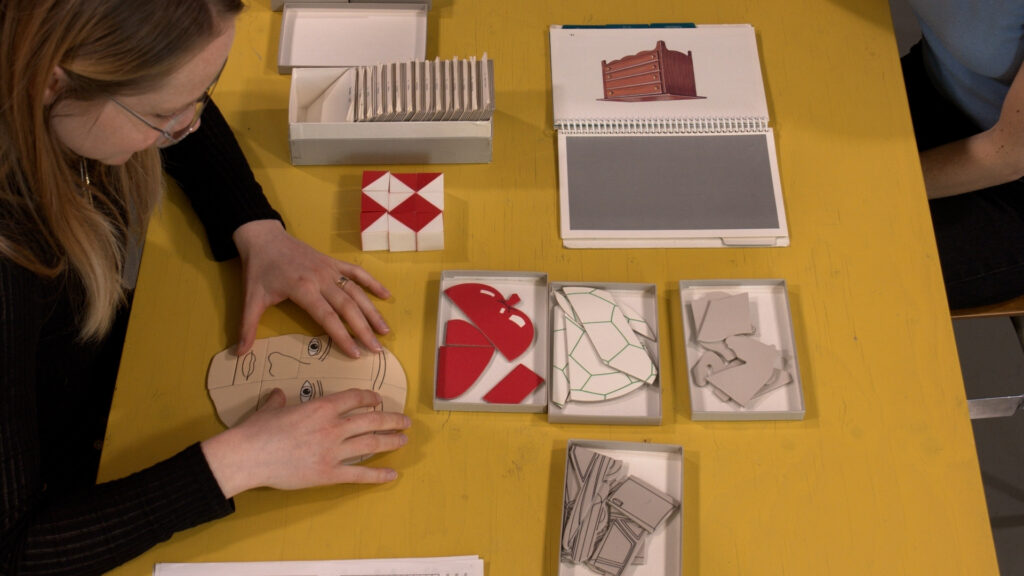
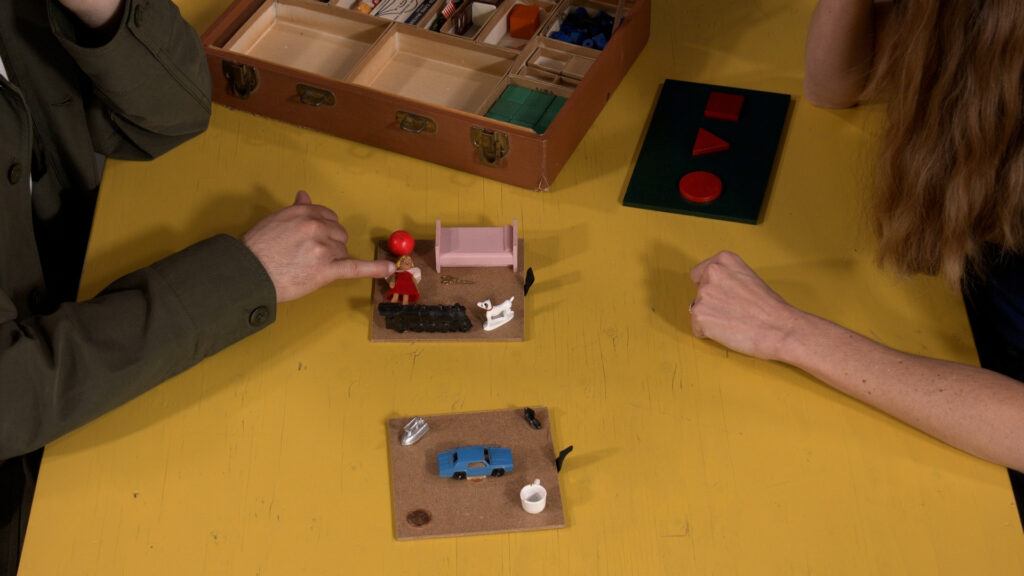
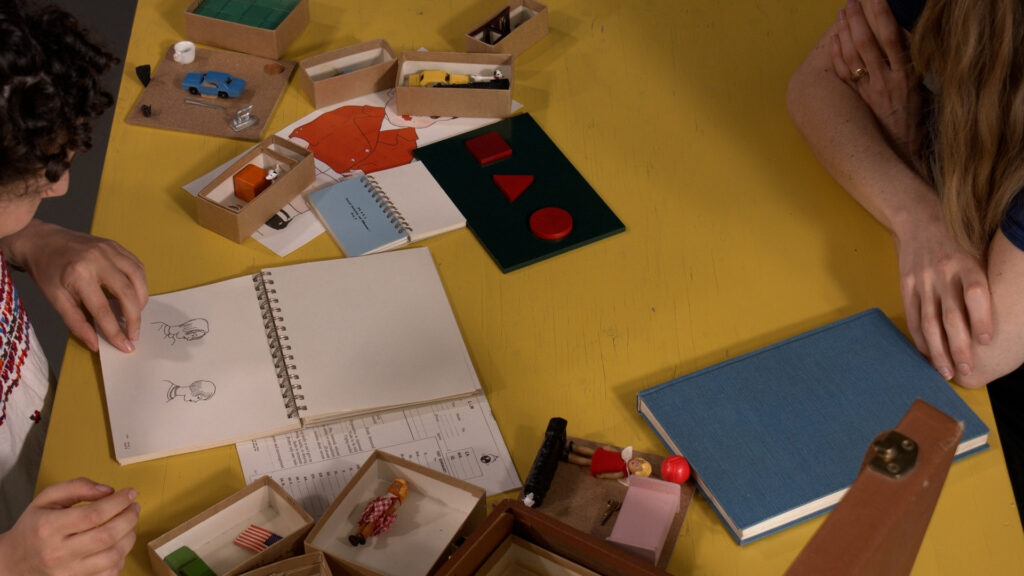

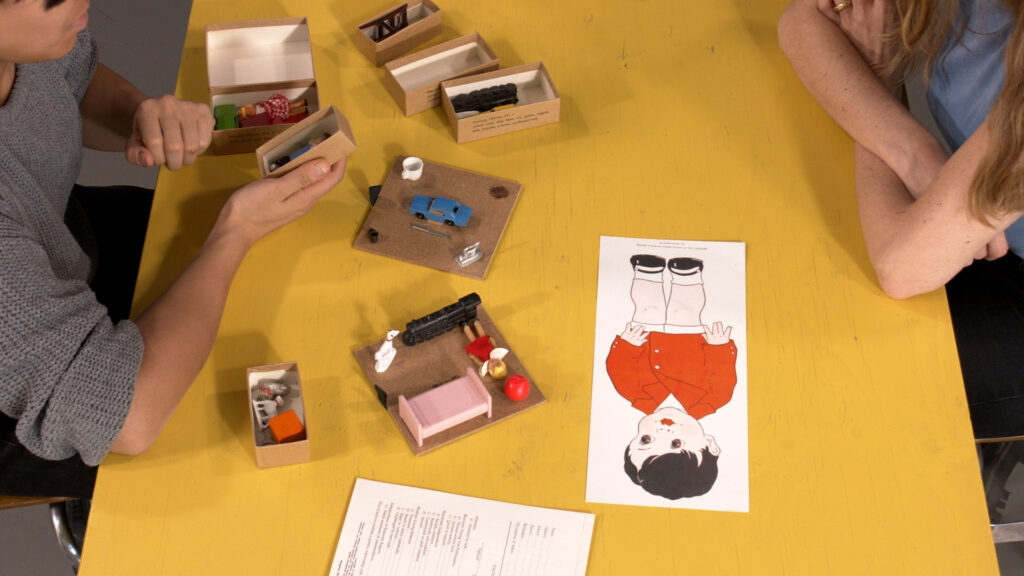
On the Subject of Tests: Opening Boxes, 2022
Video (still)
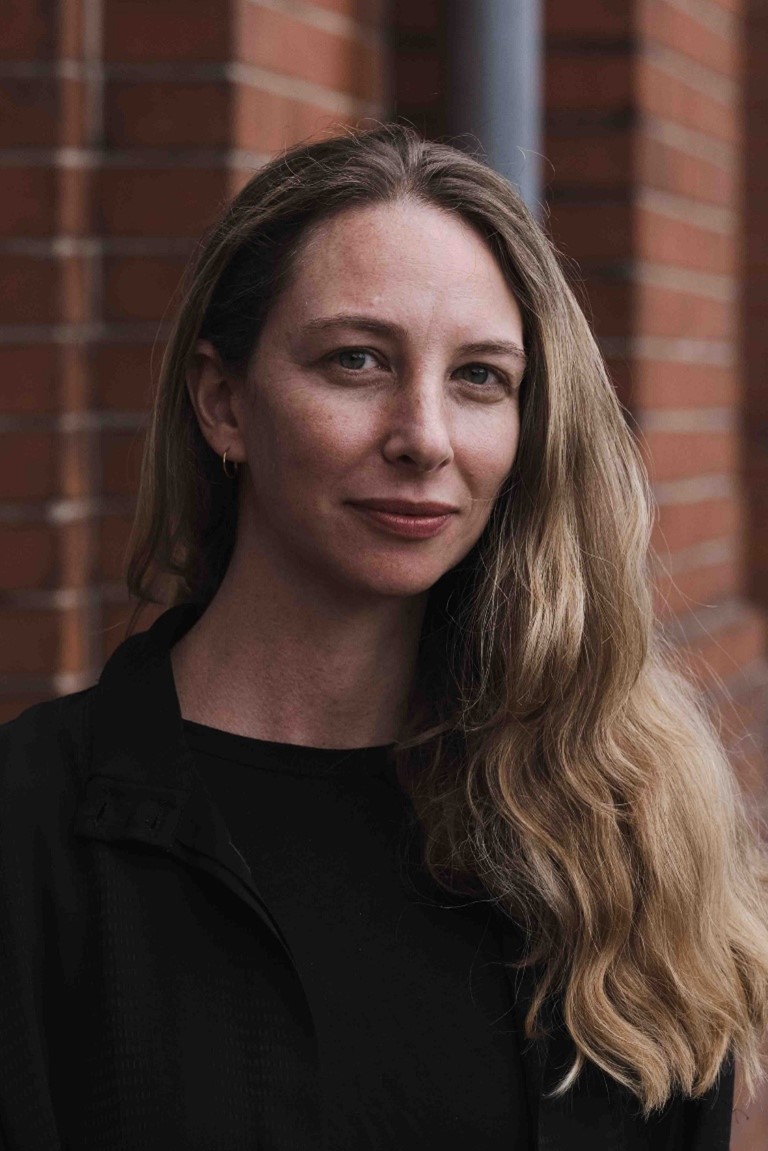
Sasha Bergstrom-Katz
Sasha Bergstrom-Katz is an artist, researcher and writer working in the intersections between the history of science, psychology, cognitive sciences and perception studies. She holds a PhD in Psychosocial Studies at Birkbeck, University of London in Psychosocial Studies and is a visiting postdoctoral researcher at Bielefeld University. Previously, she was a visiting researcher at the Max Planck Institute for the History of Science Berlin and the University of Groningen, Netherlands and in 2021 was a resident fellow at BS-Projects (Hochschule für Bildende Künste Braunschweig, Germany). She has exhibited at the Peltz Gallery, London; Inter Arts Center (IAC), Malmö, Sweden; HBK, Braunschweig; Los Angeles Municipal Art Gallery, Los Angeles, CA; In Lieu, Los Angeles, CA; AWHRHWAR, Los Angeles, CA; Human Resources, Los Angeles, CA and the Torrance Art Museum, Torrance, CA, among others.
Photo by Camille Blake
Indexing Tech for Disability Justice: blocks, boards, plates, shafts & volumes
Categories produce limits. Limits limit our imagination. Imagination is a resource that we need. We find each other by naming ourselves. What do we call it, let’s give it a name. When we go to the trans*crip meeting / club / bar / bookshop / chatgroup / the right doctor / hacking meeting / work session / meetup / class / workshop – we find each other. When we negotiate more space in categories that confine and open up possibility vis-a-vie broken systems – something changes.
This presentation follows the project: Indexing Tech for Disability Justice: blocks, boards, plates, shafts & volumes — negotiating the affordances of naming affinity and sites of embodiminded difference towards an index of technological hir- his – her- story. An Index that would serve an intersectional disability justice tech movement. Moving against a techno- racial- capitalist narrative assuming that people are only users — to be impacted upon and extracted from — this installation works with a series of historical intersectional crip, trans*, BIPoC innovations that shift the terms of what what we think of when we think of technology.

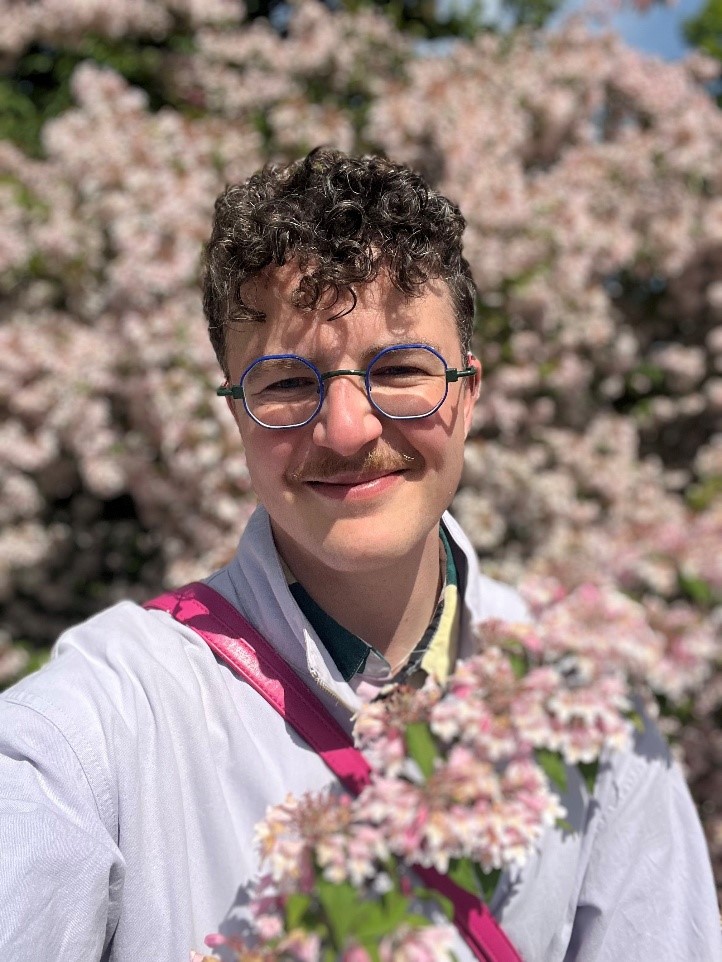
Ren Loren Britton
Ren Loren Britton is a trans*disciplinary artist-designer who reverberates with trans*feminism, technosciences, radical pedagogy and disability justice. Trans*feminist technoscience in their work follows the long wiggle of cyberfeminism; focusing on trans*, as in, transgender and trans*, as in, crossing contexts with feminist concerns. They are interested in the ways that socio technical systems & media makes lives accessible and pleasurable. Departing from the understanding that we live in a deeply ableist white supremacist world to be able to follow a justice oriented direction requires the rethinking and remaking of practices considering the terms of who fits where, at what scale, with what friction (or not) and why. These considerations accompany them with frameworks around disability justice, upholding and valuing all non-normative bodies and minds. Their artistic research is collaborative, engages their community and focuses on the critical technologies. Their work engages community narratives and invents media practices towards connecting non-linear futures, pasts and presents. Their work engaging hir- her- his- torical storytelling: tells otherwise stories about technologies, counter-pathologies and community connection.
Ren has shared artistic work within multiple institutions including ALT_CPH Biennale (Copenhagen), Transmediale & Haus der Kulturen der Welt & Martin Gropius Bau (Berlin), Constant (Brussels), Sonic Acts (Amsterdam), Kunsthalle Osnabrück (Osnabrück), Het Nieuwe Institute & Varia (Rotterdam) & Rupert (Vilnius). Recent academic articles have been published in Catalyst, MATTER and Digital Creativity and within edited volumes by Bloomsbery Academic, Spektor Books and Barbara Budrich.
Website: https://lorenbritton.com/
ERBSENZÄHLER
The project ERBSENZÄHLER (literally: “pea counter”, idiomatically: “bean counter”) explores the increasing quantification and datafication of life through mathematical-technical procedures and systems – from counting and sorting to statistics and computer-aided processes – and the worldview that accompanies them.
It consists of a series of industrial-looking sorting machines in which pea seeds are analyzed, classified, and sorted according to various parameters: from simple, quantifiable features such as weight to more complex ones like color or quality. Each station engages with different aspects of the quantification of life and the history of automation.
In my presentation, I use the ERBSENZÄHLER project as an aesthetic and conceptual lens to reflect on broader questions and make these more tangible: What shifts occur when fundamental human activities like counting, classifying, and sorting are increasingly delegated to machines and “intelligent” systems? In this context, I am particularly interested in the tension that arises when algorithmic decision-making replace subjective, situated, and ambiguous processes of human judgment.
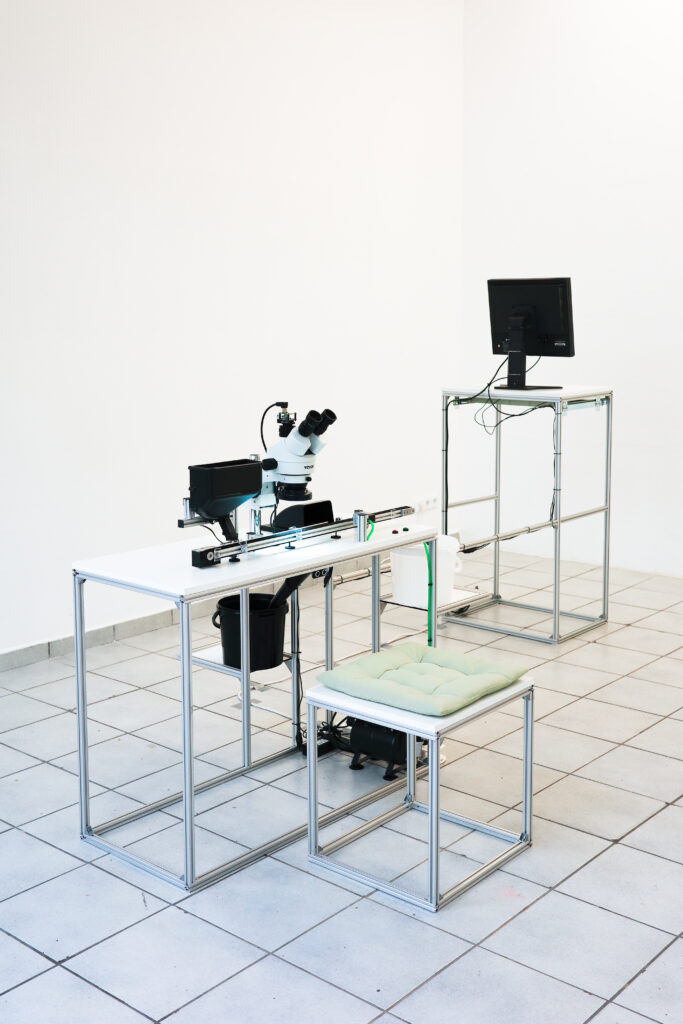
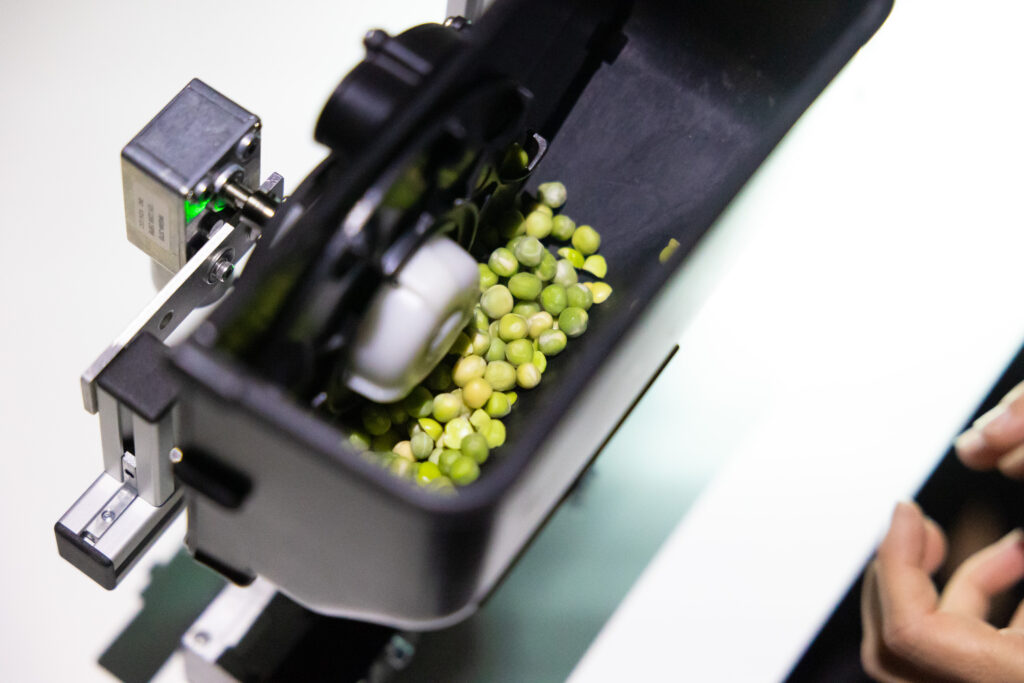
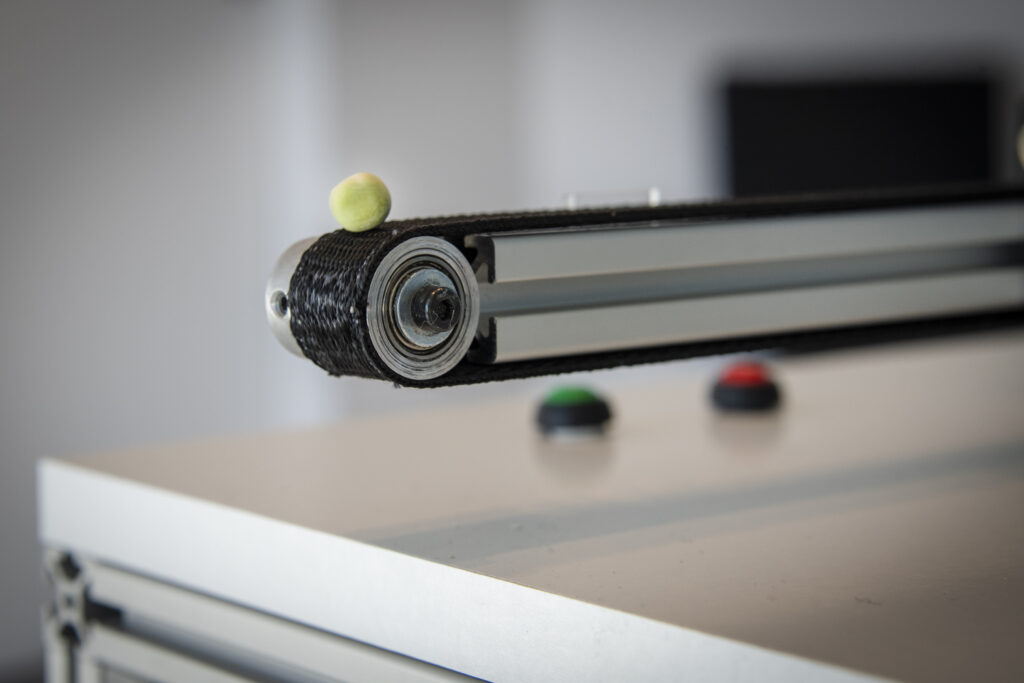

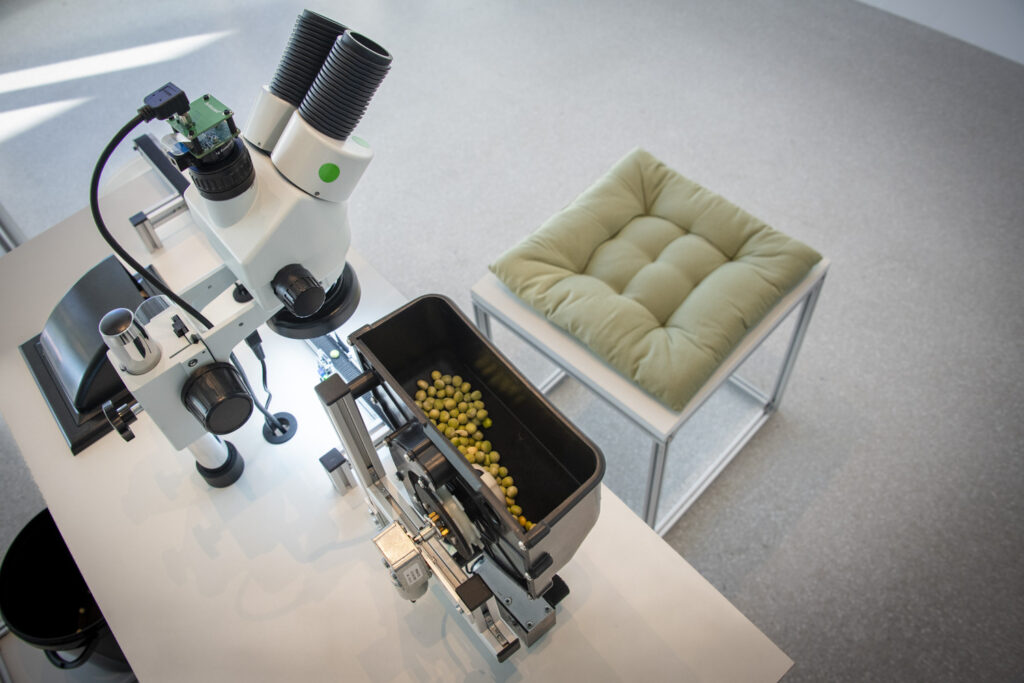
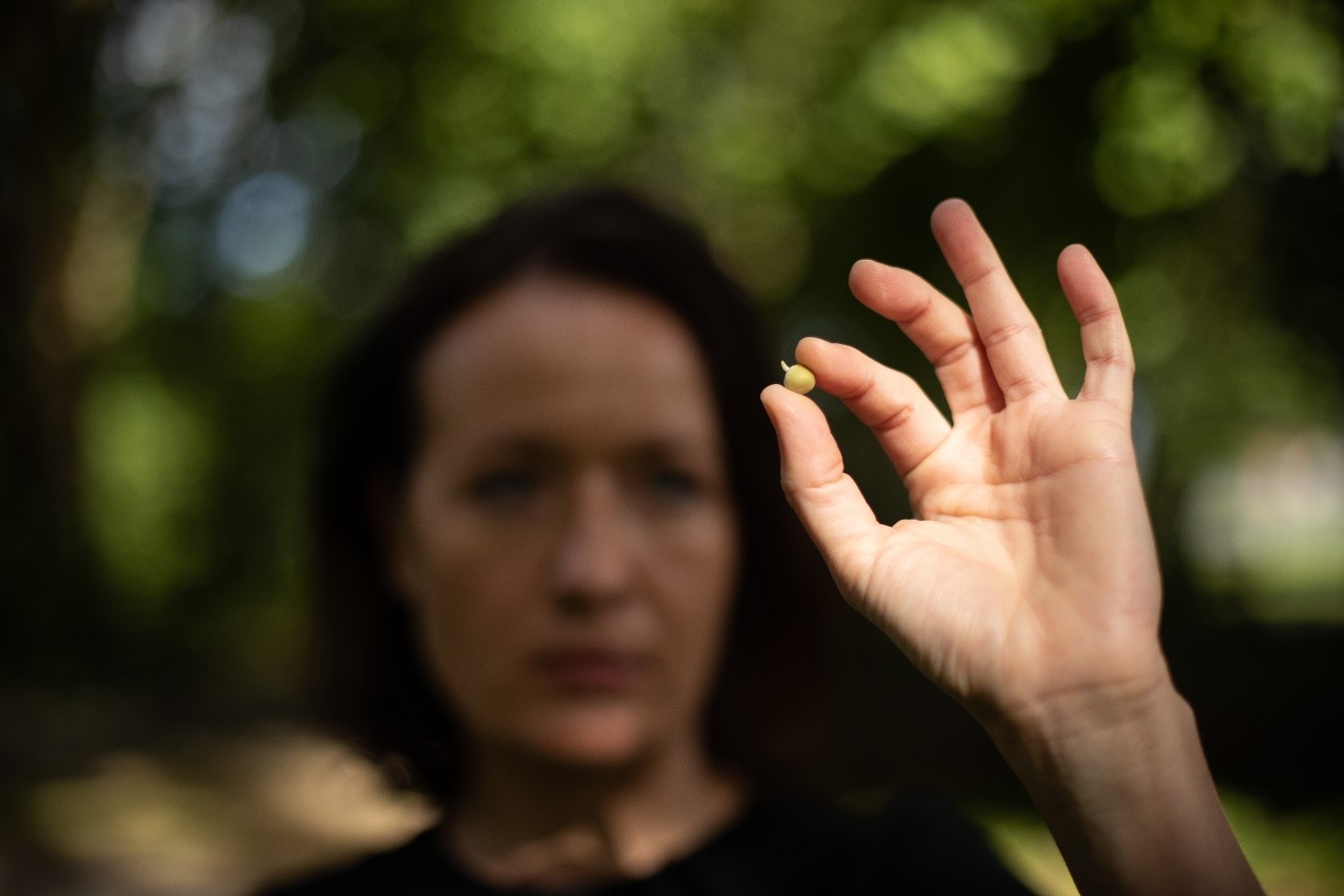
Verena Friedrich
Verena Friedrich is an artist and researcher working at the intersection of art, science, technology, and engineering. In her time-based installations, she blends organic, electronic, and sculptural media to explore the possibilities and limits of technological intervention and control. Drawing from scientific theories and engineering methods, her works often take the form of poetic machines or experimental setups that critically reflect on the technological conditioning of life.
Her projects have been presented internationally in exhibitions, festivals, and conferences, including ZKM Karlsruhe, Nam June Paik Art Center Seoul, New Media Gallery Vancouver, Kapelica Gallery Ljubljana, Ars Electronica Linz, and Chronus Art Center Shanghai. As part of her production processes, she has collaborated with research institutions such as SymbioticA (UWA), the Max Planck Institute for Biology of Ageing (Cologne), and the Laboratory for Stem Cell Bioengineering at EPFL (Lausanne).
Friedrich has received multiple awards and recognitions, including honorary mentions at Prix Ars Electronica and Japan Media Arts Festival, as well as the International Media Award for Science and Art from ZKM.
Website: www.heavythinking.org
Photo by Camilo Pachón – Stiftung Künstlerdorf 2022
Header photo: Sasha Bergstrom-Katz, On the Subject of Tests: Opening Boxes, 2022. Video.



